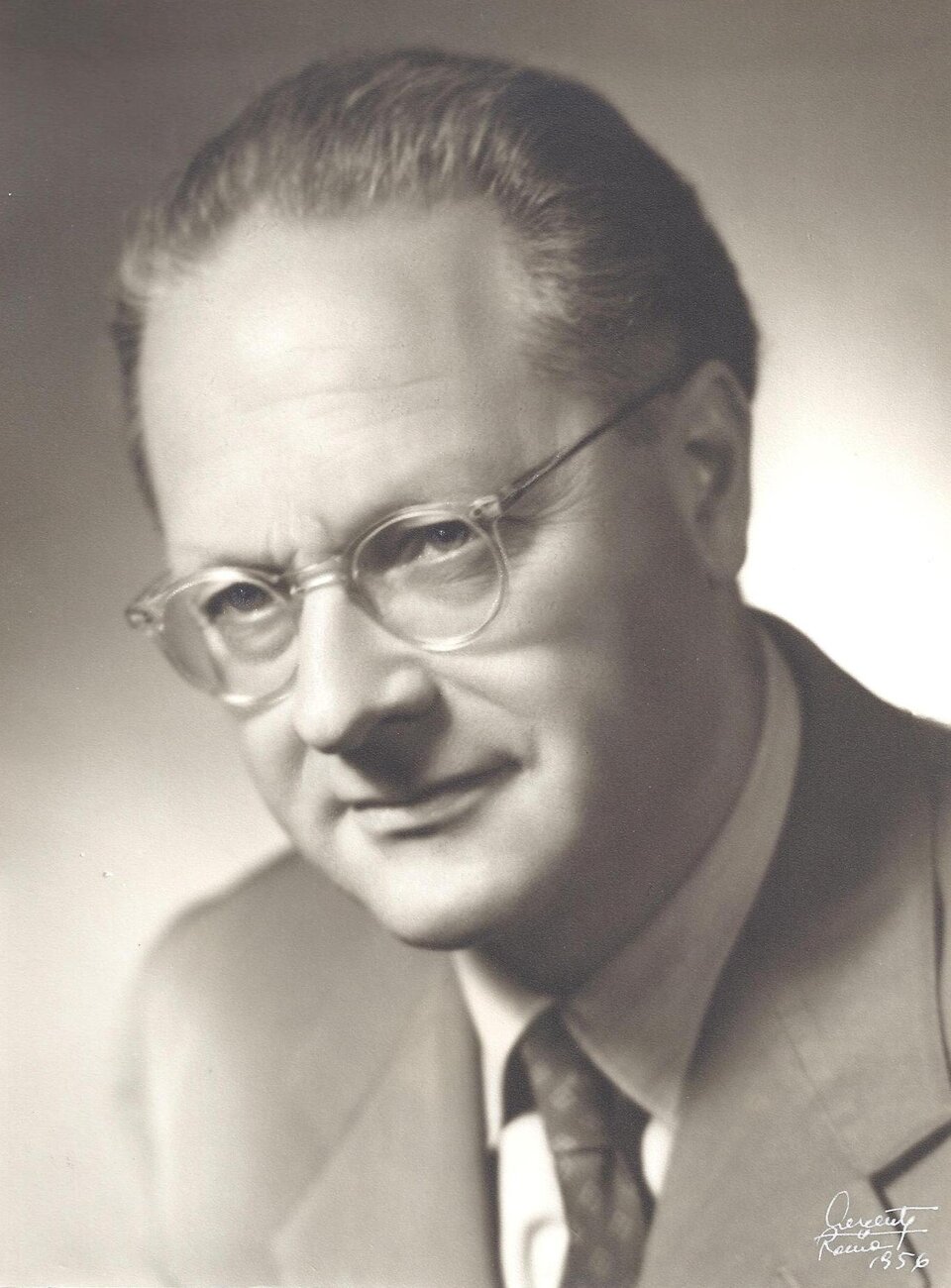Edoardo Amaldi
Edoardo Amaldi, the Italian cosmic-ray physicist, was one of the founding fathers of European space research. He passed away in 1989.

Edoardo Amaldi was born in Carpaneto Piacentino (Piacenza) on 5 September 1908. With a keen interest in technical and scientific subjects (his father was professor of mathematics and mechanics) he entered the Engineering faculty of the University of Rome. After one year of university, his physics professor invited the most gifted students with a keen interest in pure physics to take advantage of the golden opportunity that had become available in that Institute. In 1926, the new luminary of physics, Enrico Fermi, had come to teach theoretical physics in Rome, the first to do so in Italy. Amaldi seized this opportunity and transferred to the course in physics.
Under the guidance of Fermi, Amaldi soon became involved in the research activities of the group, which included Emilio Segrè and Ettore Majorana, who had also been recruited from the faculty of Engineering. Amaldi gained his degree in experimental physics in 1929.
During the 1930s, the group scattered throughout Italy and abroad due to the development of fascist governmental policy. Mussolini and his government no longer funded research to the extent they did in the first half of the 1930s. Fermi departed to the United States after being awarded the Nobel Prize in 1938, without even returning to Italy, from Sweden.
Amaldi himself was thinking of going to the USA, where he would have had no difficulty in finding a university chair in physics after the Second World War, but he decided to remain in Italy. This choice proved a winning one: in fact, the reconstruction of the Italian scientific environment after war, and in particular in Rome, was due almost entirely to Amaldi.
He kept the chair of General Physics at the University 'La Sapienza' of Rome for almost forty years, teaching and following generations of physicists, trying to maintain and strengthen the inimitable style learned from Fermi. From his initial work in nuclear physics with Fermi and the others, he did pioneering work in the field of cosmic rays and then devoted himself to the new field of particle physics.
He became a point of reference for Italian particle physics after the war and contributed directly to the realisation of national and international projects, such as the electrosynchrotron in Frascati, the Istituto Nazionale di Fisica Nucleare (INFN), CERN in Geneva, and then ESA, all exist thanks to his far-seeing commitment.
When speculation about a NATO scientific satellite for Europe arose in the late 1950s, Amaldi was convinced that space research should not fall into the hands of the military. He was prompted into action, and wrote an open letter to a handful of eminent European administrators of science in 1959, which began the process leading to COPERS and the founding of ESRO.
While supportive of ELDO, Amaldi was not happy with the progress of existing European rocket programmes, so once COPERS was established, he withdrew from active involvement in the organisation process; an exception was the negotiations surrounding ESRIN in Frascati. He was active in promoting space science in Italy, developing lectures and summer school programmes for young physicists.
In the last part of his career, he turned to new fields: from a scientific point of view he contributed to the institution of new research on gravitational waves in Rome; from a political and social standpoint he promoted initiatives and workshops on disarmament and the peaceful use of nuclear physics: the Amaldi Conferences continue to bear witness to this.
He was not new to this kind of commitment: during the war while Fermi in the USA was studying controlled chain reactions that would lead to the first nuclear pile and the first nuclear weapons, Amaldi had decided to interrupt his research in Rome in nuclear physics, fearing political and military manipulations.
Amaldi authored some 200 scientific publications, as well as textbooks for secondary schools and universities. He died suddenly in December 1989, while still active as the president of the Accademia dei Lincei, of which he had been a member since 1948.
Compiled with material courtesy of the Accademia Nazionale dei Lincei, Rome.

